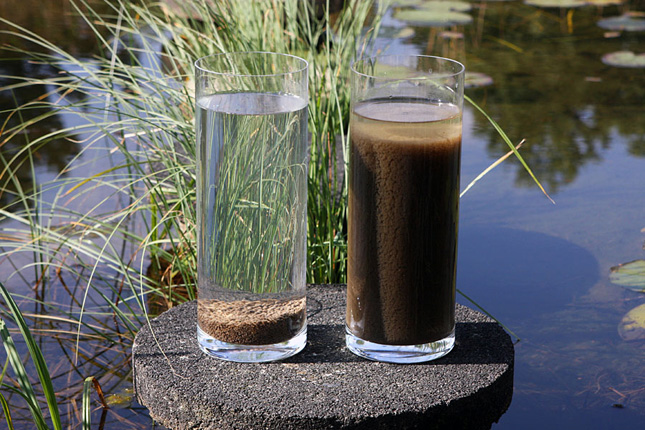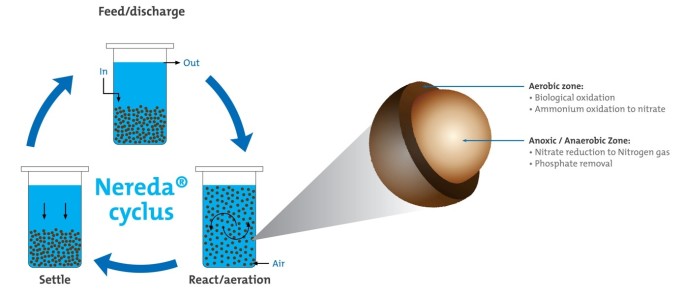-
Managing Sludge Mountains: What Beijing Can Learn From Brazil

Just days before the 2016 Summer Olympics began in Rio de Janeiro, the Brazilian city faced an unsavory problem: how to handle its overwhelming sewage. Nearly half of Rio’s municipal wastewater flowed untreated into Guanabara Bay, where the waters were so polluted by sludge that direct contact was deemed a health hazard to Olympic athletes.
Rio’s struggles with sludge graphically illustrate the interlinked water, energy, and waste challenges facing the world’s expanding cities, which already house more than half of humanity. As these cities continue to grow, they will drive a 55 percent increase in global demand for water by 2050, and stress the capacity of wastewater management systems.
To handle these challenges, Brazil is rolling out innovative wastewater treatment technology like sludge-to-energy plants across its major cities. China’s water-stressed and rapidly urbanizing cities should look towards the innovative treatment and joint public-private financing examples like that of the Nereda plant in Brazil as China struggles to manage mountains of sludge, as well as floods of wastewater and storm water runoff.
Nereda: A Sludge Game-Changer
Located in Rio’s West Zone, the Deodoro Wastewater Treatment Plant is one of 27 “legacy infrastructure projects” built for the 2016 Olympics. Completed on May 26, 2016, the modern plant represents one of the seven wastewater treatment plants in Brazil that uses a groundbreaking aerobic granular sludge process called Nereda, which was developed by Mark van Loosdrecht, a professor at the Delft University of Technology in the Netherlands.
Designed to treat around 65,000 cubic meters/day of wastewater for 480,000 residents when fully functioning, the plant now serves 40 percent of the population living in Rio’s West Zone and has increased the area’s treatment capacity tenfold. It prevents an estimated 65,000 cubic meters/day of sewage from flowing into local rivers and Guanabara Bay, a massive improvement from Rio’s pre-Olympic days.
Anaerobic digestion (AD) is one of many processes in conventional activated sludge treatment. During AD, sludge from primary and secondary treatment is “cooked” (broken down by microorganisms in an oxygen free environment) in digesters, resulting in biofuels and digestate (a solid-liquid mixture that is often separated to create fertilizer). But Nereda operates differently, using bacteria that clumps around waste in dirty water to form heavy, compact granules; these sink to the bottom of tanks and leave clean, filtered water on top for easy discharge. The granules’ outer layer also removes organic material in an aerobic fashion and converts ammonium to nitrate. Inside the granules, micro-organisms convert the nitrate into nitrogen gas that rises to the surface and remove phosphate from the sludge water. The two end-products—nitrogen gas and phosphate—have useful industrial applications.

The whole process occurs in one cycle—no separate tanks, pumps, or additional filtration are required, saving the treatment plants time, money, and space. The Dutch engineering consultancy Royal HaskoningDHV claims Nereda is 25 to 30 percent cheaper than traditional, chemical-based methods and 30 percent more energy efficient than anaerobic digestion or other “activated-sludge” systems. Nereda treats higher volumes of wastewater with a smaller energy footprint and only one quarter the land area of conventional plants, reducing stress on energy systems and freeing up land for additional development in dense cities.
Since the successful pilot at a wastewater treatment plant in the small town of Epe, Netherlands, 30 Nereda plants have been built or are being tested on five continents. Early adopters include Australia, France, Germany, Portugal, South Africa, and the United Kingdom.
Can Nereda and Brazil’s PPP Model Work for China’s Cities?
To date, Brazil is the most populous country and the largest developing economy to deploy Nereda. Key to advancing these projects has been the Brazilian government’s investment in public-private partnerships (PPPs)—long term contracts between private parties and government entities for the provision of public assets or services—as a successful business model for cities and companies to emulate. Over the past five years, PPPs have proven instrumental to Nereda’s rapid implementation as well as overall improvements in wastewater treatment and sanitation across Brazilian cities.
In 2012, the government of Rio de Janeiro signed a 30-year concession contract with the Brazilian company, Foz Águas 5, investing a combined 640 million Reals (around 204 million USD, or 1.34 billion RMB) for the provision of wastewater services in 21 districts housing about half of the population in the city’s West Zone. This partnership helped address the city’s notoriously inadequate sewage system and meet its ambitious Olympic goals.
Whether Chinese cities can forge and execute similar partnerships remains uncertain. Recognizing examples of successful PPPs from around the world, the country recently began to use PPPs to finance wastewater treatment plants. For instance, the Ministry of Finance released a notice in 2016 mandating that all wastewater treatment projects integrate a PPP model. While these partnerships (and supporting national policies) need to evolve further to fulfill their potential, overall, Chinese PPPs are on the rise: the total number of PPP projects grew by 20 percent and the amount invested in PPPs rose by 21 percent to 16.4 trillion RMB (roughly 2.59 trillion USD) in the first half of 2017 alone. As part of Xi Jinping’s push for an ecological civilization, in 2016 China also launched a green bond market that is spurring pollution control and clean energy investments and could potentially be a source of funds for China to build new sludge-to-energy plants.
The regulatory and financial momentum behind Chinese PPPs encourages optimism. As Beijing tightens environmental regulations under the country’s 13th Five Year Plan, cutting-edge technologies such as Nereda may be the sludge solution many city officials need to meet higher standards. Given an alignment of partnerships, project investment, and policies, Beijing can leverage Nereda’s significant co-benefits to follow in Rio’s footsteps.
Carl Hooks was a research assistant at the China Environment Forum and is now a Yenching Scholar.
David Bachrach was a research assistant at the China Environment Forum.
This report was made possible with support the China Environment Forum received from the U.S. Environmental Protection Agency through the Global Methane Initiative, as well as funding from the Henry Luce Foundation, ClimateWorks, and Energy Foundation China.
Sources: brics2017.org, China Water Risk, Circle of Blue, U.S. Environmental Protection Agency, Foz Águas 5, Global Methane Initiative, Grupo Águas do Brasil, International Institute for Sustainable Development, Moody’s Investor’s Service, New Security Beat, Next City, Rio on Watch, Royal HaskoningDHV, Sustainable Sanitation and Water Management Toolbox, The Independent, USA Today, water-technology.net, World Bank, World Resources Institute.
Photo Credits:
Nereda biomass left and activated sludge after only minutes of settling, courtesy of Tummers77.
Principle Nereda cycle, courtesy of Wikimedia Commons user Tummers77.
 A Publication of the Stimson Center.
A Publication of the Stimson Center.




